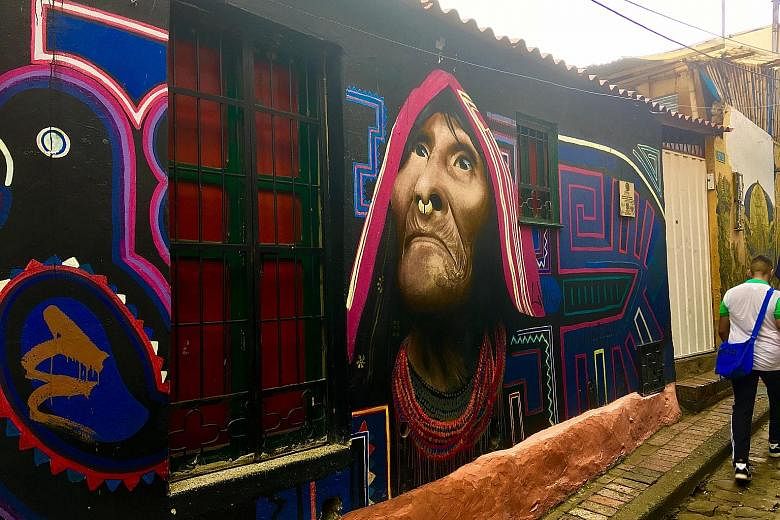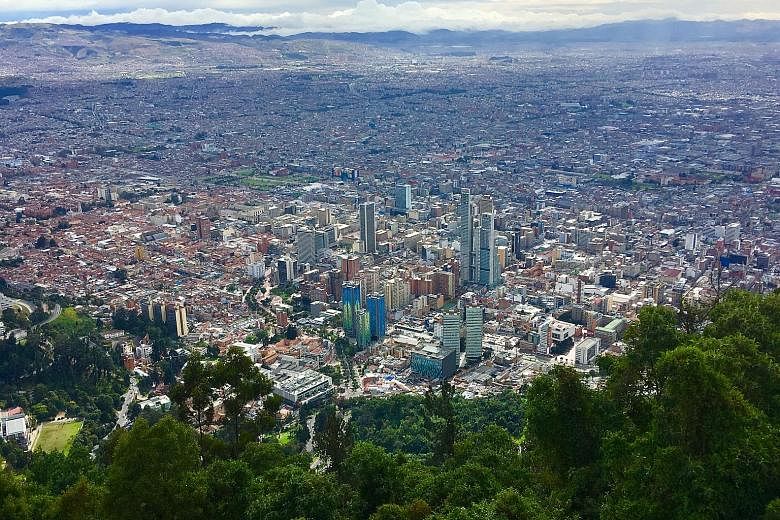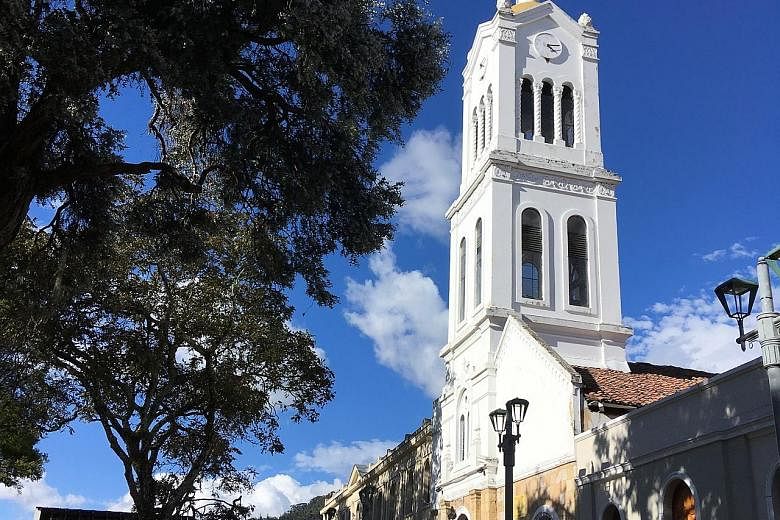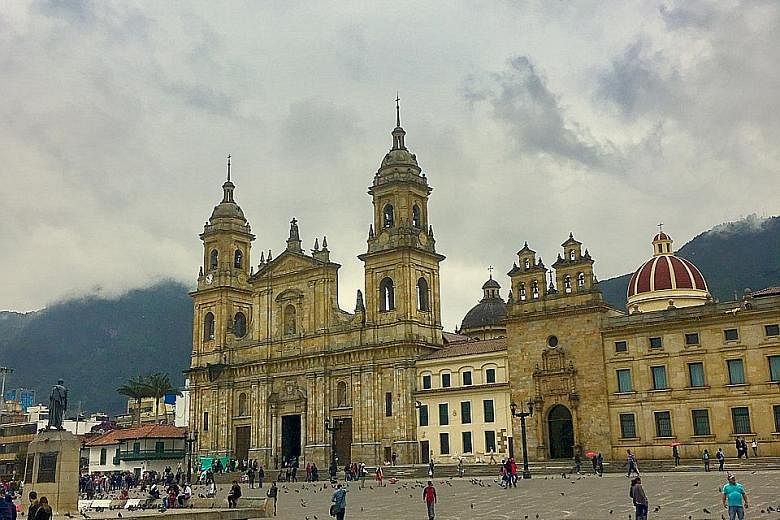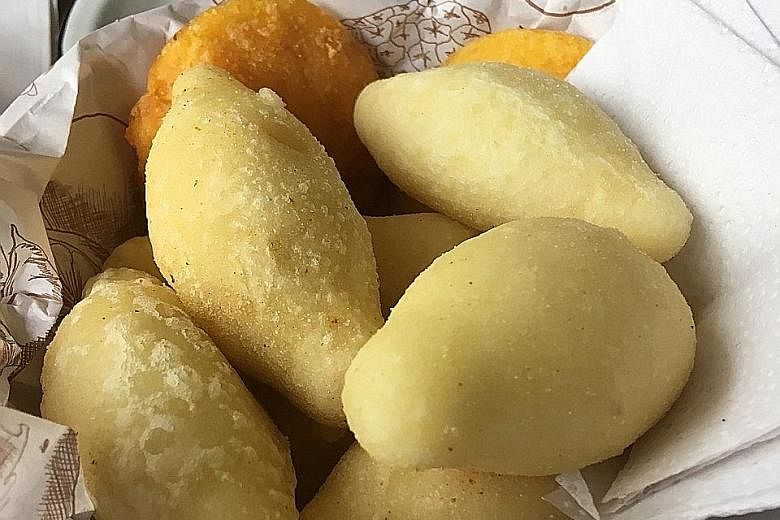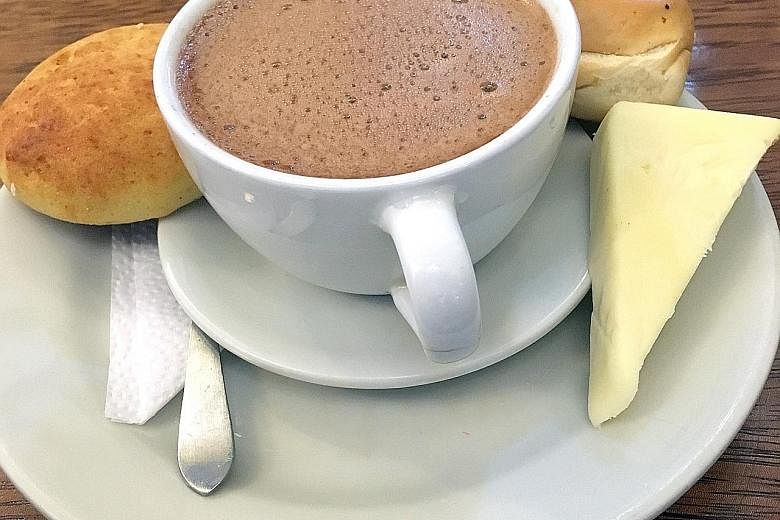There is an awful word-association game that unfolds when people find out you are from a country they know next to nothing about.
If you are Singaporean, they might gleefully say something about chewing gum laws. If you are Colombian, the first things that come to mind are typically the drug cartels and armed rebels that once terrorised the country.
But after decades of drug violence and civil unrest, this South American nation is undergoing a serious image overhaul as it revels in unprecedented peace and security, particularly after last year's historic disarmament deal between the government and Farc insurgents after half a century of war.
That and Bogota's recent emergence as South America's newest capital of cool - with trendy chef-driven eateries, a relentlessly innovative arts scene and growing ranks of home-grown hipsters to match - have made Colombia's biggest city one of the hottest new destinations in the region.
This is why The Lonely Planet travel website ranked the country at No. 2 on its list of must-visit places this year. And for Singaporeans, it became slightly more accessible in September, when Singapore Airlines announced a codeshare agreement with Colombian carrier Avianca for flights between Bogota and Changi airports via London and Barcelona.
But Colombia has not yet become a fixture on the Latin American travel circuit like Mexico, Brazil, Argentina and Peru - and that is part of its charm.
Visitors from Asia, especially, are a rare sight, as I discovered when I was there a few months ago.
I was in Bogota to cover a press event for Narcos, Netflix's drama series about the Medellin and Cali drug cartels - an acclaimed series that has raised Colombia's international profile, albeit by highlighting a period of history many would rather forget.
-
GETTING THERE
-
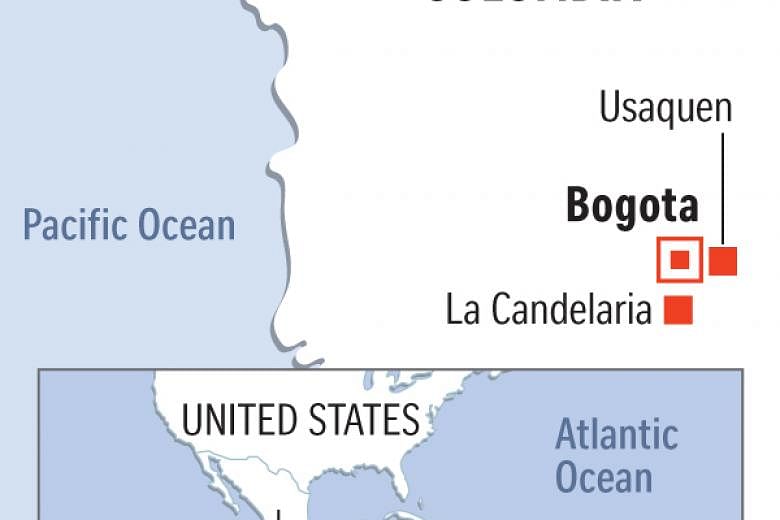
I flew to Bogota from Los Angeles on Delta Airlines with a stopover in Atlanta, but travellers from Singapore can get there on a Singapore Airlines-Avianca codeshare flight via London or Barcelona.
A sample return economy fare (departing March 4, returning March 18) from Singapore via London (Singapore to London is 14 hours and London to Bogota is 11 hours) is $2,128 including taxes and surcharges. On Air France, on the same dates and with a stopover in Paris, the return fare is $2,219.
In Bogota, I stayed at the Hilton Bogota, a solid four-star hotel. Room rates in March start at about US$300 (S$405) a night. A good budget accommodation choice is the three-star Hotel B3 Virrey (from US$55 a night). Both are a short Uber ride from the Zona G and Zona Rosa dining, shopping and nightlife areas.
Uber rides are cheap and plentiful and the easiest way to get around if you do not speak Spanish or are unfamiliar with the city.
TIPS
Thanks to pub quizzes and the board game Trivial Pursuit, a lot of people know La Paz, Bolivia, the world's highest capital at 3,640m above sea level. But Bogota is not far behind at 2,640m, and if you take the dizzying cable car ride 3,152m up to the peak that overlooks it, Mount Monserrate (or hike up, like some locals do as a pilgrimage to the church on top), you are not far behind La Paz.
Take care, though, not to overexert yourself or you could bring on a bout of altitude sickness. This malady affects everyone differently, but it took me a full five days before I could zip around at my normal speed without feeling breathless.
The reputation of Colombian coffee precedes it and there are so many coffee-growing regions here that an appreciation of them all requires a certain sophistication.
You can sample some at one of the many third-wave, artisanal coffee joints sprouting up across Bogota, many of which come with hipster baristas, complete with designer facial hair.
Some of these, like Cafe Cultor in La Candelaria, occasionally host coffee tastings organised by companies such as Flavors of Bogota (www.flavorsofbogota. com), which also offers tours to coffee farms.
But - and this may just be a lifetime of drinking kopitiam coffee and robust Italian-style brews talking here - Colombians seem to like their coffee rather less concentrated and this can be a shock to those not used to having it that way.
For a less fraught reminder of Colombia's past, there is La Candelaria, the historic heart of old Bogota. Cobblestone streets wind past Spanish colonial architecture and imposing plazas such as Bolivar Square, where stately government buildings are silhouetted against the north-western Andes.
A short walk away are the city's world-class museums, entry to many of which is free.
These include the Botero Museum, which offers a compact survey of the work of one of Colombia's most famous sons - the painter and sculptor Fernando Botero, best known for his whimsical-yet-sensual depictions of zaftig, expressionless women.
Nearby is the equally excellent but far more blingy Gold Museum. You can while away hours marvelling at gold and other artefacts from the pre-Colombian era and daydreaming about the lives of people here before the Spanish colonists arrived.
But the city's vibrant arts scene extends well beyond its public galleries. Bogota has become a world-renowned hot spot for street art by both local and international names and a guided walking tour will take you past the politically charged work of muralists such as Carlos Trilleras, whose jewel-toned portraits of indigenous women seem to glow from within.
Art also adorns the walls of La Peluqueria ("the hairdresser's" in Spanish) - including a mural by the acclaimed street artist Rodez. You can get an actual haircut here, but the space also doubles as a design studio and gallery.
Looming in the distance is Mount Monserrate which, at 3.1km up, towers above the already lofty 2.6km-high capital. The vertiginous cable-car ride to the top will take your breath away figuratively and the altitude sickness at the top will do so literally.
But as Instagram-perfect as all this is, at some point you will want to head away from the obvious tourist spots and explore the rest of this sprawling metropolis.
Many visitors venture to the northern enclave of Usaquen for its famous Sunday outdoor market, but it is popular every night of the week with locals, who noisily throng the bars and restaurants around the main church square.
Dotted here and throughout the city are eateries, such as Abasto and Misia, which represent Colombia's culinary new wave celebrating locally sourced ingredients and regional cuisines.
Abasto's Usaquen outpost is a rustic-hip dining room and farmer's market that transforms local produce into updated versions of classic dishes - fluffy-soft arepas (corn flatbreads) or meltingly tender ojo de bife, grilled ribeye served with creamy pureed Andean potatoes.
Misia - one of two restaurants owned by celebrity chef Leonor Espinosa - offers a tour of the Caribbean cuisine of Colombia's northern coast, including a sweet-and-salty beef roast made with garlic and a molasses-like sugar called panela.
To experience a slice of real Bogota life, though, do not stay in the touristy La Candelaria area - which is reportedly not that safe for tourists at night, anyway.
Instead, pick a hotel in the well-heeled neighbourhoods of Chico and Chapinero , which also puts you within easy reach of the Zona Rosa and Zona G areas - home to gleaming malls, bars, nightclubs and restaurants, as well as some posh parks and churches.
It is not unlike what you would see in any big city with cosmopolitan aspirations, but the people-watching cannot be beaten - it is fascinating to see how Bogota's young and moneyed set cut loose.
But to see all of this, you are going to be spending a lot of time in Ubers - the city's sheer size and legendary traffic jams make the ride-sharing service essential, especially for non-Spanish speakers, for whom keying a destination in an app is far easier than deciphering complicated bus timetables or taxi pricing charts (locals also say that Uber is safer than taxis).
The silver lining to sitting in traffic in an Uber? You get to experience one of the best things about Colombia: its people.
None of my dozen or so drivers spoke a lick of English, but each was unfailingly curious, not to mention incredibly patient with my halting, Google Translate-aided butchering of their language.
Delightful conversations ensued. No one even bothered with the word-association game when I said I was from Singapore. The response, across the board, was "Guau!" ("Wow" in Spanish - or, the way they said it, more like "Wowwww!")
They had never met anyone from Singapore and were bursting with questions - where is it, what is it like, what did I think of Colombia. They also volunteered unsolicited but kindly advice on sightseeing, food and what areas were safe for solo female travellers.
When I said I was there to write about Narcos, however, the reaction was mixed.
Some expressed weariness that the country was still being associated with drug kingpins such as Pablo Escobar, whom the show devotes two seasons to. But others seemed proud that their history and culture were finally being showcased to the world; one said Hollywood making a huge TV show there was a big vote of confidence.
The ambivalence is understandable, of course. And it is infectious too - spend a little time here and you, too, will long for the rest of the world to see everything else Colombia has to offer.
